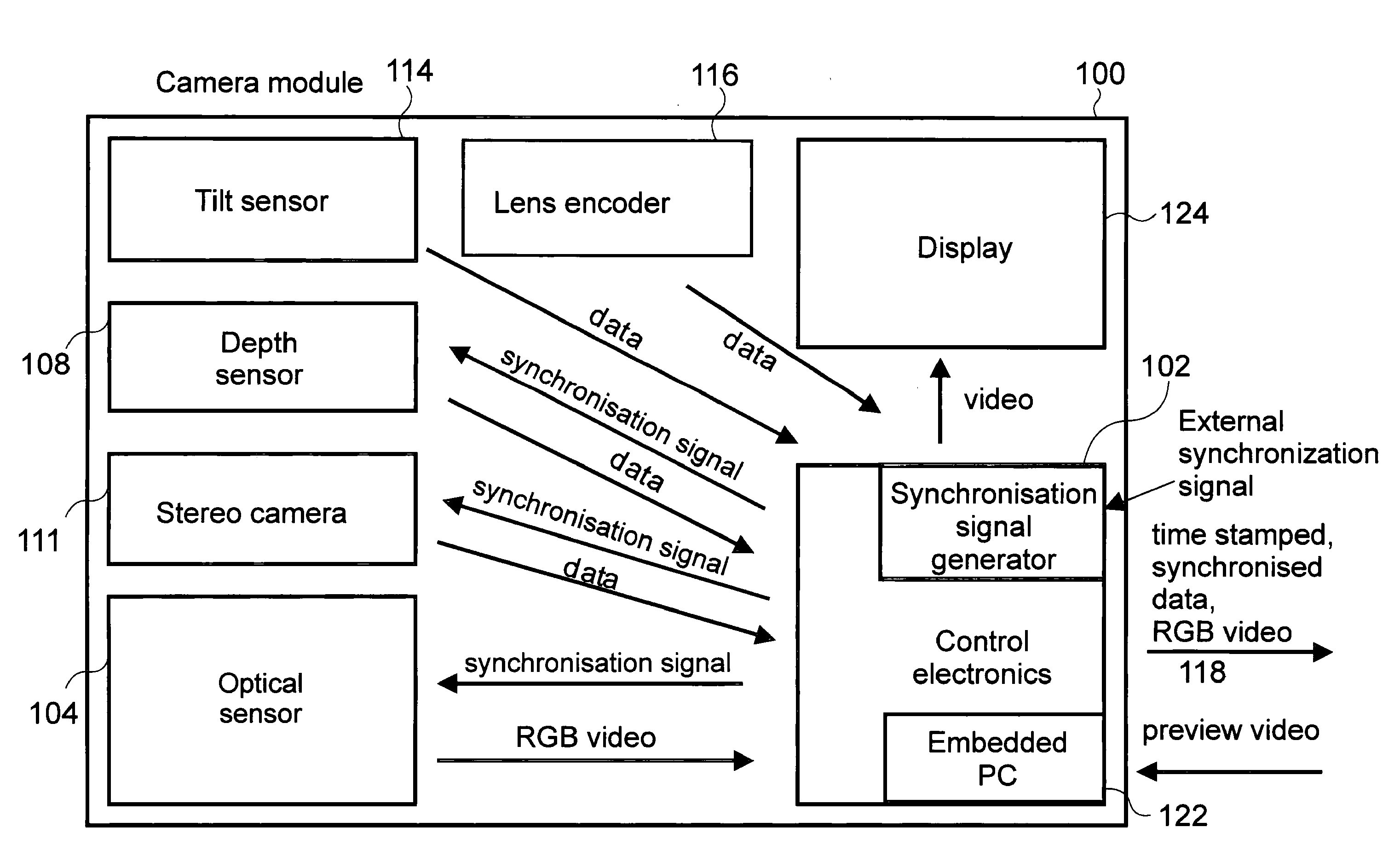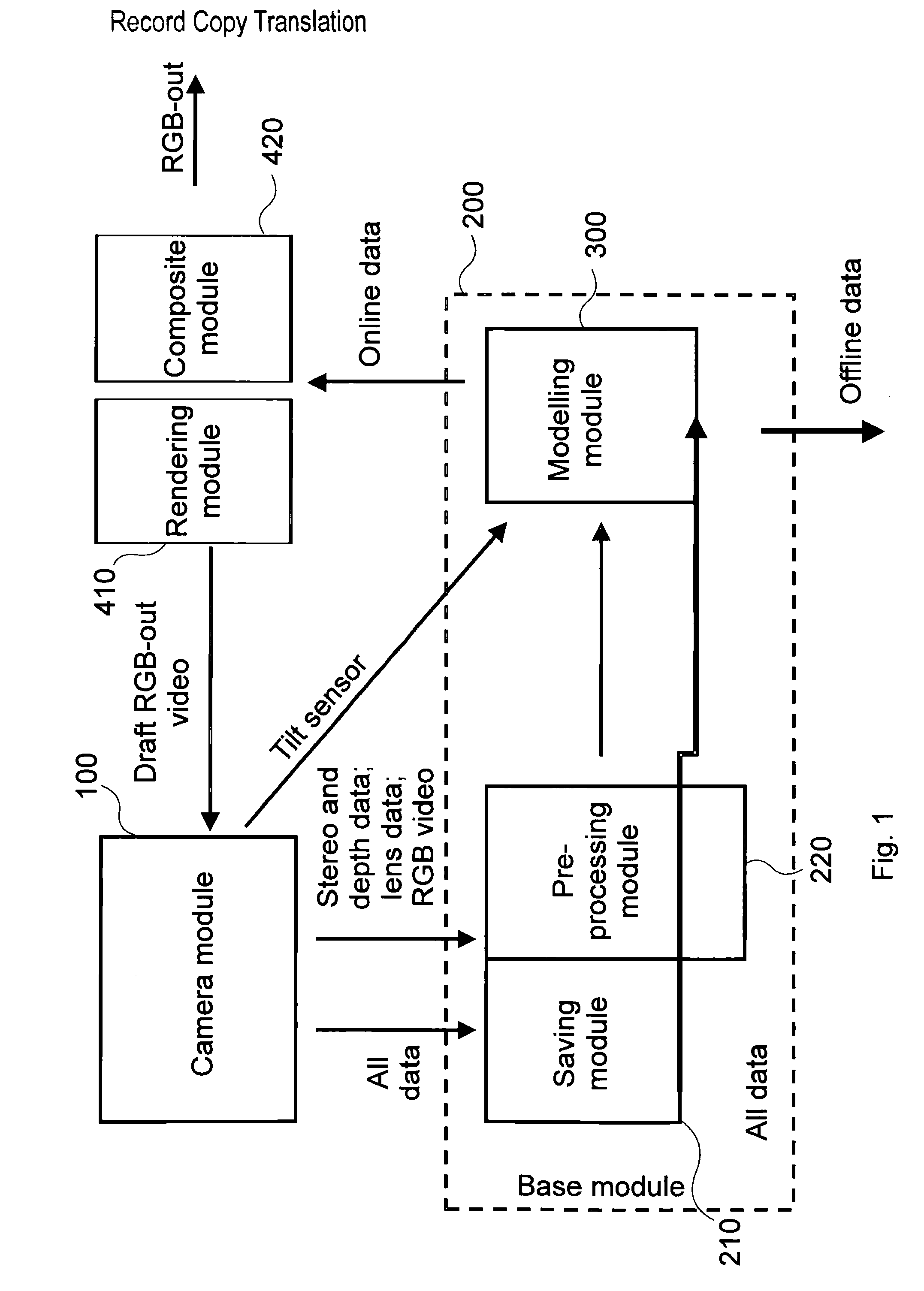System And Method For Generating A Dynamic Three-Dimensional Model
a three-dimensional model and dynamic technology, applied in the field of system and method for generating a dynamic three-dimensional model, can solve the problems of limited use and/or high cost, inability to use for professional purposes, and high cost of the apparatus developed for this purpose available on the mark
- Summary
- Abstract
- Description
- Claims
- Application Information
AI Technical Summary
Benefits of technology
Problems solved by technology
Method used
Image
Examples
Embodiment Construction
[0021]The primary object of the invention is to provide a system and method for generating a dynamic three-dimensional model of a space (a part of the space or a space part), which are free of the disadvantages of prior art solutions to the greatest possible extent.
[0022]A further object of the system and method according to the invention is to apply more efficient processing than the known solutions, preferably filtering and probability estimation, to provide more accurate data about the structure of the space than the known solutions.
[0023]The system according to the invention also records depth information in real-time, in addition to the image (optical) information. In addition to the application in the film industry, the system according to the invention may be useful in many other areas as well (safety engineering, military technology, industrial automation, etc.), but the solution basically focuses on meeting the requirements of the film industry and eliminating the problems ...
PUM
 Login to View More
Login to View More Abstract
Description
Claims
Application Information
 Login to View More
Login to View More - R&D
- Intellectual Property
- Life Sciences
- Materials
- Tech Scout
- Unparalleled Data Quality
- Higher Quality Content
- 60% Fewer Hallucinations
Browse by: Latest US Patents, China's latest patents, Technical Efficacy Thesaurus, Application Domain, Technology Topic, Popular Technical Reports.
© 2025 PatSnap. All rights reserved.Legal|Privacy policy|Modern Slavery Act Transparency Statement|Sitemap|About US| Contact US: help@patsnap.com



